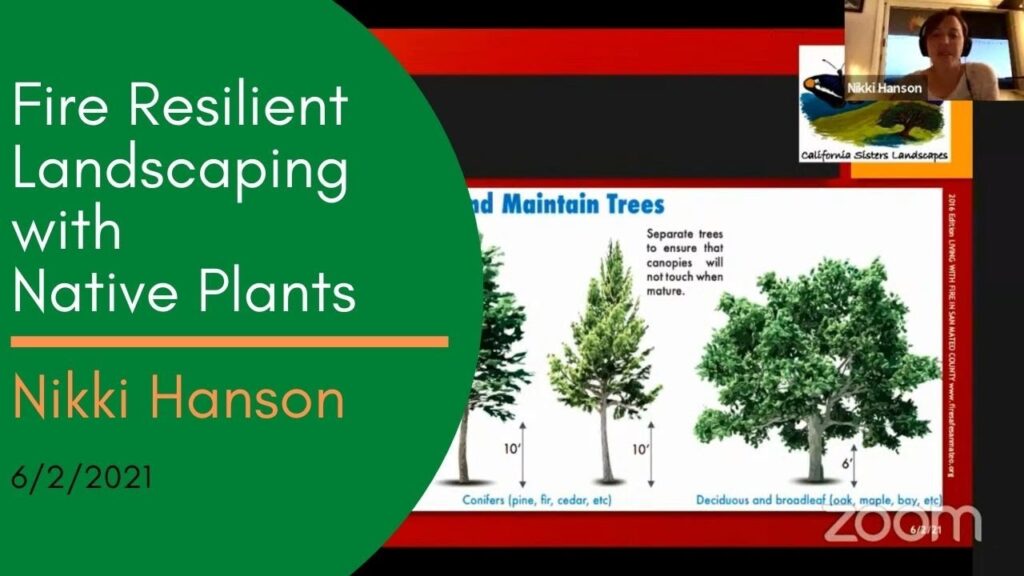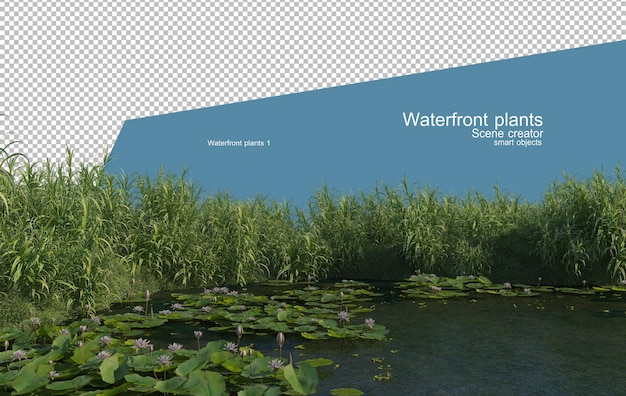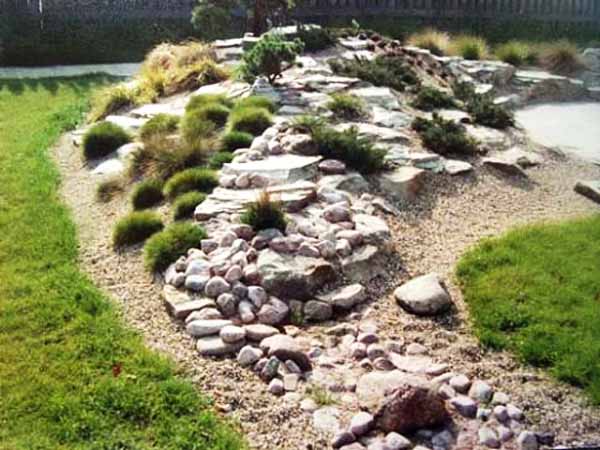
Creating Fire-Resilient Landscapes: Choosing the Right Plants for a Safer Home
The beauty of a well-designed landscape can be truly captivating. It transforms our homes into havens, provides a connection to nature, and offers a sense of tranquility. However, in regions prone to wildfires, the landscape can also be a significant factor in the safety of your home. Choosing the right plants for your landscape can make a world of difference when it comes to fire resistance. This article will delve into the intricacies of creating fire-resilient landscapes, focusing on the crucial aspect of selecting the appropriate plants. We’ll explore why this is important, what to consider, and provide a comprehensive guide to plant selection, maintenance, and overall landscape design to help you create a safer, more beautiful, and sustainable home environment.
Why Fire-Resilient Landscaping Matters
Wildfires are a growing concern in many areas, and the damage they can inflict is devastating. Beyond the destruction of property, wildfires can endanger lives and release harmful pollutants into the air. Fire-resilient landscaping is a proactive approach to mitigate these risks. It involves designing and maintaining your landscape to reduce the likelihood of a fire starting and to slow its spread if one does occur. This is not just about aesthetics; it’s about safety and peace of mind.
The Threat of Wildfires
Climate change, increased development in wildland-urban interfaces, and the accumulation of dry vegetation are all contributing to the rising threat of wildfires. Understanding the risks specific to your location is the first step in creating a fire-resilient landscape. Consider the following factors:
- Climate: Areas with hot, dry summers and strong winds are at higher risk.
- Vegetation: The type and density of vegetation in and around your property significantly impact fire risk.
- Topography: Slopes can accelerate the spread of fire.
- Local Regulations: Many communities have specific guidelines for landscaping in fire-prone areas.
Benefits of Fire-Resilient Landscaping
Investing in fire-resilient landscaping offers several key benefits:
- Increased Safety: Reduces the risk of your home igniting during a wildfire.
- Property Protection: Can help protect your home and surrounding structures from fire damage.
- Reduced Insurance Costs: Some insurance companies offer discounts for homes with fire-resistant landscaping.
- Environmental Benefits: Promotes sustainable landscaping practices, such as water conservation and reduced use of pesticides.
- Aesthetics: Fire-resistant landscapes can be just as beautiful and diverse as traditional landscapes.
Key Considerations When Choosing Plants
Selecting plants for fire-resilient landscapes requires careful consideration of several factors. These factors relate to the plants themselves, their placement, and the overall design of the landscape.
Plant Characteristics and Fire Behavior
Not all plants are created equal when it comes to fire resistance. Some plants are inherently more flammable than others. Understanding the characteristics that contribute to a plant’s flammability is crucial:
- Flammability: Refers to how easily a plant ignites and how quickly it burns.
- Fuel Load: The amount of combustible material (leaves, twigs, branches) a plant contains.
- Sap and Resins: Plants with high oil, resin, or sap content tend to be more flammable.
- Leaf Characteristics: Fine, dry leaves are more flammable than thick, fleshy leaves.
- Water Content: Plants with high water content are generally more fire-resistant.
Plant Selection Criteria
When choosing plants for your fire-resilient landscape, consider the following criteria:
- Fire Resistance: Choose plants with low flammability, high moisture content, and minimal accumulation of dead leaves and debris.
- Growth Habit: Select plants with a low-growing, open, or spreading habit to reduce the potential for fire to climb to the roof.
- Water Requirements: Opt for plants that are drought-tolerant to conserve water and reduce the need for irrigation.
- Maintenance Needs: Choose plants that are relatively low-maintenance to minimize the accumulation of dry vegetation.
- Local Adaptability: Select plants that are well-suited to your climate and soil conditions.
Recommended Plants for Fire-Resilient Landscapes
The following plant lists offer suggestions for fire-resistant plants, categorized by type. Remember to always check local regulations and consult with a local nursery or landscape professional to determine the best choices for your specific area.
Trees
Choose trees that are less likely to ignite and that can provide shade and visual appeal without increasing fire risk. Consider the following:
- Deciduous Trees: Deciduous trees, which lose their leaves annually, generally have higher moisture content during the fire season. Examples include:
- Oak (Quercus spp.): Many oak species are relatively fire-resistant.
- Maple (Acer spp.): Maples are also a good choice.
- Poplar (Populus spp.): Poplars offer rapid growth and are often suitable.
- Fire-Resistant Conifers: Some conifers are more fire-resistant than others. Examples include:
- Pine (Pinus spp.): Certain pine species, such as Ponderosa Pine, can be fire-resistant.
- Douglas Fir (Pseudotsuga menziesii): This tree can be a good choice in certain areas.
- Spacing: Space trees adequately to prevent the spread of fire from one tree to another.
Shrubs
Shrubs can provide visual interest, privacy, and habitat for wildlife. However, select shrubs carefully to minimize fire risk:
- Fire-Resistant Shrubs: Choose shrubs with low flammability. Examples include:
- Ceanothus (Ceanothus spp.): Known for their fire resistance and beautiful blooms.
- Manzanita (Arctostaphylos spp.): Native to many fire-prone regions and highly adaptable.
- Buckwheat (Eriogonum spp.): Offers attractive foliage and flowers.
- Avoid Highly Flammable Shrubs: Certain shrubs are best avoided in fire-prone areas. These include:
- Juniper (Juniperus spp.): Some varieties are highly flammable.
- Rosemary (Salvia rosmarinus): Contains volatile oils that can increase flammability.
- Certain types of conifers: Be wary of densely packed conifers.
- Pruning: Regularly prune shrubs to remove dead or dry branches and to maintain an open growth habit.
Groundcovers
Groundcovers can help suppress weeds, prevent erosion, and add visual appeal. Choose fire-resistant options:
- Fire-Resistant Groundcovers: Opt for groundcovers with low flammability and high moisture content. Examples include:
- Ice Plant (Delosperma spp.): Succulent groundcover with high water content.
- Stonecrop (Sedum spp.): Another succulent option.
- Creeping Thyme (Thymus serpyllum): Adds fragrance and beauty while being relatively fire-resistant.
- Avoid Flammable Groundcovers: Avoid groundcovers that accumulate dry leaves or have high oil content.
Flowers and Perennials
Flowers and perennials can add color and beauty to your landscape. Choose them with fire safety in mind:
- Fire-Resistant Flowers and Perennials: Consider these options:
- Yarrow (Achillea millefolium): Offers beautiful blooms and is relatively fire-resistant.
- Coneflower (Echinacea purpurea): Adds color and attracts pollinators.
- Blanket Flower (Gaillardia spp.): A drought-tolerant and fire-resistant choice.
- Maintenance: Regularly deadhead flowers and remove spent foliage to reduce fuel load.
Landscape Design Principles for Fire-Resilient Landscaping
Plant selection is only one aspect of fire-resilient landscaping. The overall design of your landscape plays a vital role in minimizing fire risk. Consider these principles:
Creating Defensible Space
Defensible space is the area around your home that is managed to reduce the risk of fire. It is divided into zones, each with specific guidelines:
- Zone 1 (0-5 feet from the home): This zone should be free of flammable materials. Use non-combustible landscaping materials like gravel or paving stones. Keep plants sparse and well-maintained.
- Zone 2 (5-30 feet from the home): This zone should have fire-resistant plants that are well-spaced and regularly maintained. Remove dead or dry vegetation.
- Zone 3 (30-100 feet or more): This zone should have a mix of fire-resistant plants and well-maintained areas. Thin out dense vegetation and prune trees to prevent the spread of fire.
Plant Placement and Spacing
Proper plant placement and spacing are essential for fire safety:
- Spacing: Space plants appropriately to prevent the spread of fire from one plant to another.
- Vertical Clearance: Prune trees to create vertical clearance between the ground and the lowest branches.
- Avoid Overhanging Branches: Do not allow branches to overhang your roof or touch your house.
Irrigation and Water Management
Adequate irrigation and water management are crucial for fire safety:
- Irrigation Systems: Install an efficient irrigation system to keep plants healthy and hydrated.
- Water Features: Consider incorporating water features, such as ponds or fountains, to create a fire break and provide a water source for firefighters.
- Rainwater Harvesting: Collect rainwater for irrigation to conserve water and reduce your reliance on municipal water supplies.
Hardscaping and Non-Combustible Materials
Using hardscaping and non-combustible materials can significantly reduce fire risk:
- Patios and Walkways: Use non-combustible materials such as concrete, brick, or stone for patios and walkways.
- Mulch Alternatives: Replace flammable mulch with non-combustible materials like gravel or decomposed granite.
- Fencing: Use fire-resistant fencing materials such as metal or stone.
Maintenance and Ongoing Care
Fire-resilient landscaping is not a one-time project; it requires ongoing maintenance and care to remain effective. Regular maintenance is key to keeping your landscape fire-safe.
Pruning and Thinning
Regular pruning and thinning are crucial for reducing fuel load and preventing the spread of fire:
- Pruning: Prune trees and shrubs regularly to remove dead or dry branches and to maintain an open growth habit.
- Thinning: Thin out dense vegetation to improve air circulation and reduce the potential for fire to spread.
Debris Removal
Remove dead leaves, twigs, and other debris promptly to reduce fuel load:
- Regular Cleanup: Regularly clear leaves, pine needles, and other debris from your yard, gutters, and roof.
- Composting: Compost yard waste in a designated area away from your home.
Irrigation and Monitoring
Maintain your irrigation system and monitor your plants for signs of stress:
- Irrigation: Ensure your irrigation system is functioning properly and watering plants adequately.
- Plant Health: Monitor your plants for signs of stress, such as wilting or discoloration, and address any issues promptly.
Seasonal Considerations
Adjust your maintenance practices to match the season:
- Spring: Remove dead vegetation and prepare your landscape for the fire season.
- Summer: Increase irrigation and monitor your plants for signs of stress.
- Fall: Remove fallen leaves and debris.
- Winter: Prune trees and shrubs as needed.
Local Resources and Regulations
Before embarking on your fire-resilient landscaping project, it’s essential to familiarize yourself with local resources and regulations:
Local Fire Departments
Contact your local fire department for information on fire safety regulations and recommendations for your area. They can provide valuable insights and guidance.
Local Nurseries and Landscape Professionals
Consult with local nurseries and landscape professionals for advice on plant selection and landscape design specific to your region. They can offer expert knowledge and help you create a landscape that is both beautiful and fire-safe.
Homeowner Associations (HOAs)
If you live in a community with an HOA, review their guidelines for landscaping and fire safety. Make sure your landscaping plans comply with any applicable regulations.
Government Agencies
Check with local government agencies for information on fire safety programs, grants, and other resources that may be available to help you create a fire-resilient landscape.
Conclusion: Protecting Your Home and Community
Creating a fire-resilient landscape is a responsible and proactive step towards protecting your home, your family, and your community. By choosing the right plants, implementing sound landscape design principles, and providing ongoing maintenance, you can significantly reduce the risk of wildfire damage and create a safer, more beautiful environment. Remember that fire-resilient landscaping is an investment in your safety and well-being, and it can contribute to the long-term sustainability of your property and the surrounding ecosystem. With careful planning and consistent effort, you can transform your landscape into a haven that thrives even in the face of fire.
Embrace the knowledge and resources available to you, and take the first steps towards creating a fire-resistant landscape that protects your home and contributes to a safer future for everyone.


